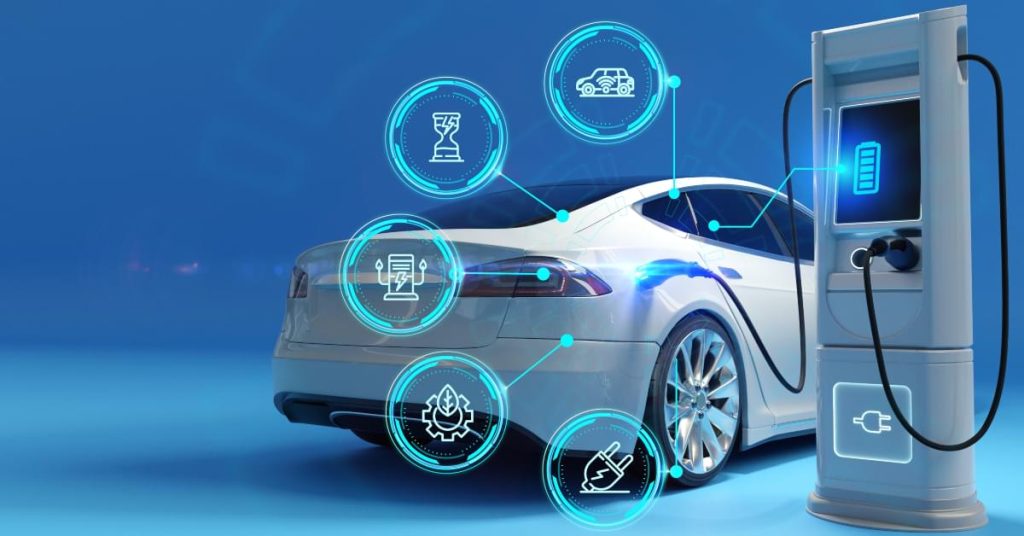Introduction: The Environmental and Health Benefits of Electric Mobility
As global urbanization continues to surge and concerns about climate change and air quality grow, the transportation sector is undergoing a significant transformation. Traditional fossil fuel-based vehicles are being gradually replaced by electric mobility solutions, which promise to reduce carbon emissions, improve air quality, and contribute to healthier, more sustainable urban environments. This shift toward electric transportation is not only beneficial for the planet but also offers numerous wellness benefits for individuals.
Electric mobility encompasses a wide range of transportation options, from electric cars and bicycles to electric public transit systems. These innovations in transportation have the potential to radically change the way we think about how we move, while contributing to the reduction of air pollution and greenhouse gas emissions. Additionally, electric vehicles (EVs) and active transport modes like cycling and walking are closely tied to improving physical health and mental well-being, creating a win-win scenario for both the environment and the people who rely on these transportation methods.
This article explores the role of electric mobility in shaping a greener, healthier future. From the environmental benefits of electric cars to the wellness advantages of active transportation, we will delve into how electric mobility is transforming both the way we travel and how we live.
Electric Cars: Reducing Emissions with Sustainable Personal Transportation
Electric cars are arguably the most well-known and impactful aspect of the electric mobility revolution. Powered by electricity, rather than gasoline or diesel, electric vehicles (EVs) produce zero tailpipe emissions, meaning they do not release harmful pollutants like carbon dioxide (CO2), nitrogen oxides (NOx), or particulate matter into the air. This drastically reduces their environmental impact compared to traditional internal combustion engine (ICE) vehicles, making them a crucial element in efforts to combat climate change and reduce air pollution.
EVs help reduce the overall carbon footprint of personal transportation. Over their lifecycle, electric vehicles typically emit fewer greenhouse gases compared to conventional vehicles, even when accounting for the electricity used to charge them. As the energy grid becomes greener through the increased use of renewable energy sources like solar and wind, the environmental benefits of electric cars will only grow.
In addition to environmental advantages, electric cars also contribute to healthier cities. With fewer emissions and less air pollution, EVs help improve urban air quality, which has a direct correlation with better respiratory and cardiovascular health. Air pollution from vehicles is a leading cause of respiratory diseases, such as asthma and bronchitis, and is linked to higher rates of heart disease. By reducing harmful emissions, electric cars can directly improve public health, especially in urban areas where pollution is most concentrated.
Moreover, electric cars are often quieter than their gasoline counterparts, contributing to reduced noise pollution. Lower noise levels have been linked to better mental health, as noise pollution is associated with stress, sleep disturbances, and decreased cognitive performance.
Electric Bicycles and Scooters: Urban Mobility with Minimal Environmental Impact
While electric cars are an essential part of the green transportation revolution, smaller electric mobility solutions, such as electric bicycles (e-bikes) and electric scooters (e-scooters), are also playing a key role in transforming urban transportation. These vehicles are ideal for short to medium commutes, making them particularly effective for reducing congestion and emissions in busy city centers.
E-bikes and e-scooters are powered by rechargeable batteries and use an electric motor to assist with pedaling or provide full acceleration. These forms of transportation are more energy-efficient than cars, emitting significantly less CO2 and requiring less space for parking and infrastructure. Their small size and affordability make them ideal for urban environments where traditional cars would be impractical or inefficient.
From a wellness perspective, e-bikes and e-scooters offer a unique balance of physical activity and convenience. Unlike electric cars, which eliminate the need for physical exertion altogether, e-bikes encourage users to engage in low-impact exercise while still offering the option to rest when needed, making them an accessible option for individuals who may not be able to cycle long distances on their own. Active transportation—whether through pedaling or walking—has been proven to have a wide range of health benefits, including improved cardiovascular health, stronger muscles and joints, and enhanced mental health.
The rise of shared e-bike and e-scooter services in cities around the world is making it easier for people to adopt greener modes of transport. These shared services reduce the need for private car ownership, which in turn leads to fewer emissions and less traffic congestion.

EV Charging Infrastructure: Building the Infrastructure for a Cleaner Future
As the number of electric vehicles on the road continues to grow, the development of a robust EV charging infrastructure becomes increasingly critical. Without adequate charging stations, the convenience and accessibility of electric vehicles are limited, hindering their widespread adoption.
The global expansion of EV charging networks is already underway, with governments, businesses, and private companies investing in building public and private charging stations. These charging stations range from slow chargers (ideal for home use) to fast chargers (which can charge EVs in a matter of hours or even minutes).
A strong charging infrastructure is vital for supporting the transition to electric mobility, as it encourages consumers to switch to EVs by providing the reassurance that they can charge their vehicles when needed. Cities are also experimenting with solar-powered charging stations, which offer a sustainable solution to powering electric vehicles while further reducing the environmental impact of transportation.
Furthermore, wireless charging technologies are emerging, enabling EVs to charge while parked over inductive charging pads embedded in the ground. This technology is being explored as a potential solution to the limitations of current charging stations, making it easier for EV owners to charge their vehicles without the need for cords and plugs.
A well-developed charging infrastructure is essential for making electric mobility practical and mainstream, allowing more individuals and businesses to adopt electric vehicles and reduce their carbon footprint.
Health Benefits of Active Transport: How Walking and Cycling Are Improving Wellness
Active transport, which refers to forms of transportation that require physical activity, such as walking and cycling, has long been recognized as a cornerstone of wellness. The shift towards electric mobility, especially with electric bicycles and scooters, offers a unique opportunity to combine the environmental benefits of electric transportation with the health benefits of physical activity.
Research consistently shows that regular walking and cycling are associated with improved cardiovascular health, weight management, reduced stress, and improved mental well-being. These forms of exercise also enhance mobility, independence, and quality of life, particularly for those who may not have access to a gym or prefer not to engage in high-intensity workouts.
In addition, active transportation has a significant impact on reducing traffic-related stress and the negative health effects of long commutes. People who walk or cycle to work are less likely to experience the stress and anxiety that often accompany congested urban commutes. Furthermore, walking and cycling in green spaces, such as parks and nature trails, has been shown to boost mood and reduce mental fatigue.
Electric bicycles and scooters strike a perfect balance between physical activity and convenience. While they assist with propulsion, these devices still require some level of physical engagement, allowing users to benefit from light to moderate exercise without overexertion. This makes them an ideal solution for individuals of all fitness levels and those seeking a more active lifestyle.
Electric Public Transport: How Cities Are Embracing Electric Buses and Trains
Electric public transportation is rapidly gaining traction in cities worldwide as municipalities work to reduce their carbon footprints and improve urban air quality. Electric buses, trains, and trams are becoming integral parts of sustainable urban mobility strategies, offering a cleaner alternative to diesel-powered public transport systems.
Electric buses are already in operation in cities like London, Los Angeles, and Shenzhen, with more cities following suit. These buses reduce air pollution and noise levels in densely populated areas, improving the quality of life for residents. With the added benefit of lower operating costs and less maintenance compared to their diesel counterparts, electric buses present a cost-effective solution for cities looking to green their public transportation fleets.
Electric trains and trams also offer a sustainable option for long-distance and urban commuting. By running on electricity, these transportation methods help reduce reliance on fossil fuels, contributing to a cleaner and healthier environment.
Electric public transport systems are particularly beneficial in reducing traffic congestion and improving air quality. In cities where private car use is common, mass transit options like electric buses and trains provide an affordable and sustainable alternative that benefits both individual passengers and the broader community.
Conclusion: The Role of Green Transportation in a Healthier, More Sustainable Future
Electric mobility represents the future of green transportation, offering significant environmental and health benefits. From reducing greenhouse gas emissions to improving air quality, electric vehicles, bicycles, and public transport options are playing a crucial role in the fight against climate change and the creation of more sustainable cities.
The health benefits of electric mobility are also undeniable. Active transport, such as walking, cycling, and using electric bikes and scooters, promotes physical fitness, mental well-being, and reduced stress. These benefits extend beyond the individual to the community level, as reduced emissions and cleaner air lead to healthier urban environments for all.
With continued investment in charging infrastructure, smart mobility solutions, and the development of sustainable technologies, electric mobility will undoubtedly be a central part of the future of transportation. As more cities adopt green transportation options, we can expect a cleaner, healthier, and more connected world that prioritizes both environmental sustainability and individual well-being.


















































Discussion about this post